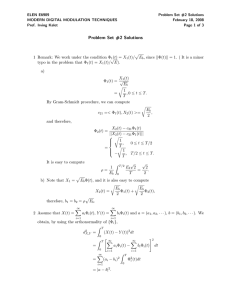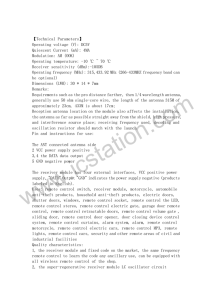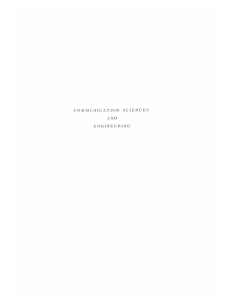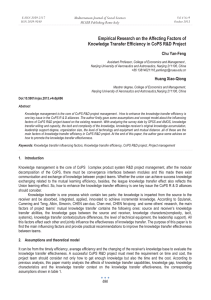Modern Digital Modulation Techniques ELEN E6909 Columbia University
advertisement
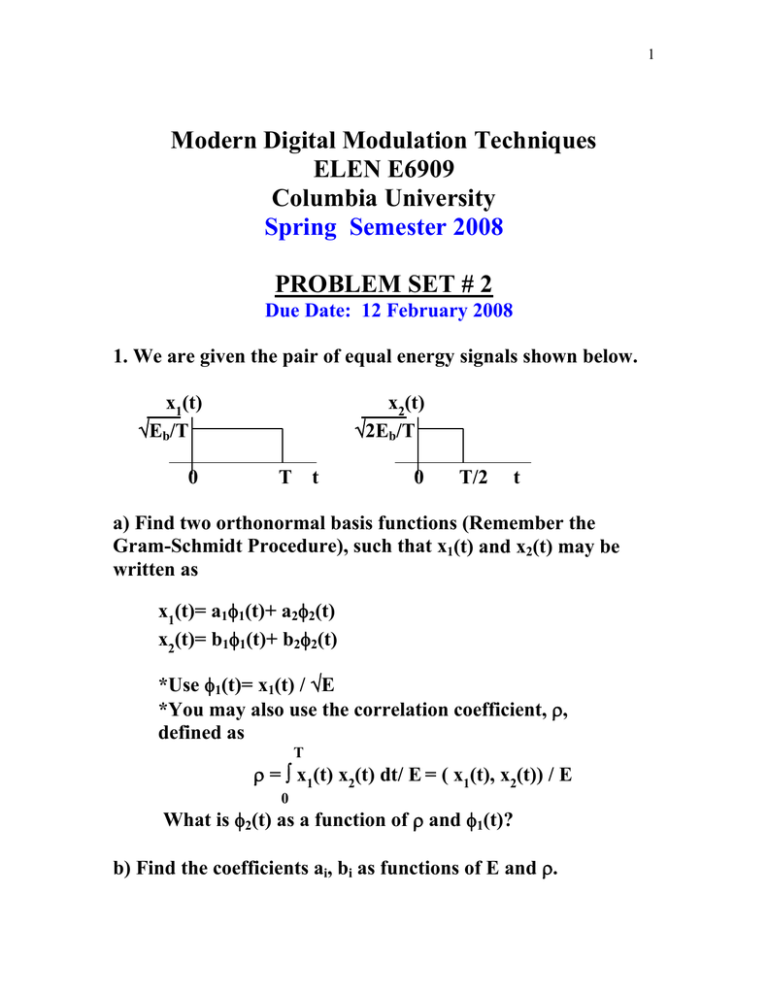
1 Modern Digital Modulation Techniques ELEN E6909 Columbia University Spring Semester 2008 PROBLEM SET # 2 Due Date: 12 February 2008 1. We are given the pair of equal energy signals shown below. x1(t) √Eb/T 0 x2(t) √2Eb/T T t 0 T/2 t a) Find two orthonormal basis functions (Remember the Gram-Schmidt Procedure), such that x1(t) and x2(t) may be written as x1(t)= a1φ1(t)+ a2φ2(t) x2(t)= b1φ1(t)+ b2φ2(t) *Use φ1(t)= x1(t) / √E *You may also use the correlation coefficient, ρ, defined as T ρ = ∫ x1(t) x2(t) dt/ E = ( x1(t), x2(t)) / E 0 What is φ2(t) as a function of ρ and φ1(t)? b) Find the coefficients ai, bi as functions of E and ρ. 2 Problem # 2 Prove the statement which was made in class, during the review, that the distance, dx,y, between two signals, x(t) and y(t), defined in the time domain, by the equation below, equals the distance between the two vectors, “a” and “b” representing the two signals. T dx,y = ∫ ( x(t)-y(t)) dt 2 0 da,b2= ⏐a -b ⏐2 2 3 Problem # 3 The equation below is the equation describing the optimum decision rule in signal space. If the inequality is true, we decide on signal “1”, and if the reverse is true we decide on signal ‘0”. T ∫ [r (t) - E s1 (t)]2 0 1 T dt < ∫ [r (t) - E s0 (t)]2 0 0 dt In inner product form, it is written as the equation below ⎪⎪ r(t) -√E1s1(t) ⎪⎪2 < ⎪⎪ r(t) -√E0s0(t) ⎪⎪2 Using the equation above in the time domain, show that the resulting optimum receiver has the form which we drew in class and, which is shown again on the next page. 4 THE CORRELATION RECEIVER √E1s1(t) T ∫ 0 + Decide on signal 1 r(t) > (E1-E0)/2 T ∫ 0 √E0 s0(t) - 5 Problem # 4 You are given a binary communications system, using the two signals shown below operating over an additive white gaussian noise channel (N0/2 watts /Hz). a) Find and draw the optimum two-branch correlation receiver b)What is the probability of bit error for this receiver? c)Draw the two-branch matched filter for this modulation technique. d)What is the probability of bit error for this receiver? √E/ T √E s1(t) √E/ T T t √E s2(t) T t


